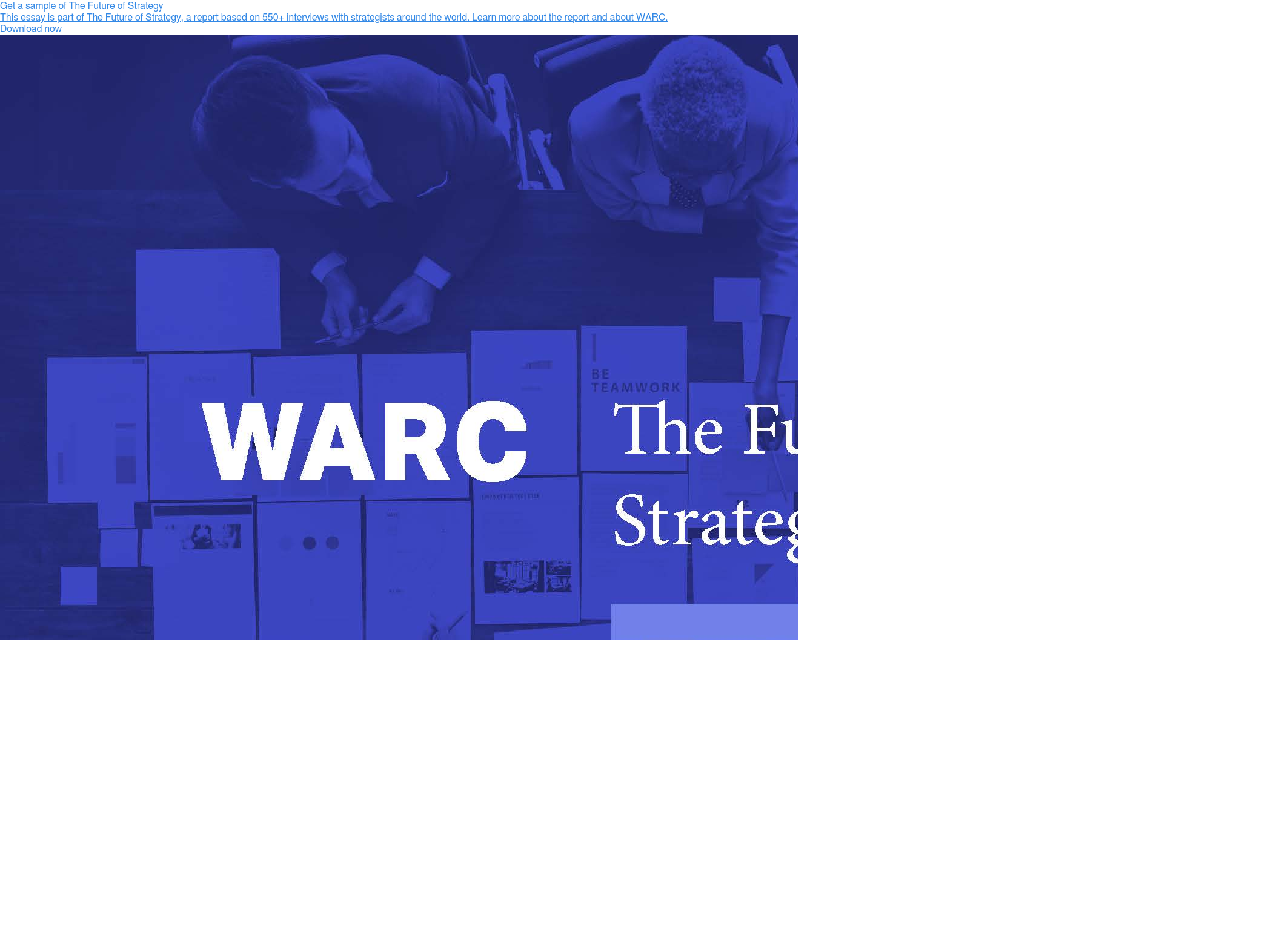Is it time to set strategy free? Tying strategy to creative limits the discipline’s potential, argues JWT’s Shekhar Deshpande in an essay for WARC’s Future of Strategy report 2018.
Strategy in creative agencies was born to Stephen King and Stanley Pollitt in 1968. It was the offspring of a purposeful experiment – created specifically to be of service to its older sibling, the creative product. There were frustrations around a lack of customer orientation, and a lack of rigour. Planning was conceived to address the issues that were ailing creative.
As time went on, strategy grew increasingly useful and important. Agencies hired more planners. They became more popular with clients. Agencies, however, subsidised strategy, because ultimately, it was good for the core business. Even as strategy was learning to fly, its wings were clipped by its originators, perhaps unknowingly. Strategists were only offered to clients when they bought a substantial chunk of creativity. The bigger the account, the more strategists worked on it, and smaller accounts, though creatively interesting, couldn’t afford strategy.
It showed. A look at the CVs of most strategists is a dead giveaway to this mindset. It’s all about the work, and even most interviews are still essentially a demonstration of how you helped make great campaigns, and make campaigns great.
Cut to the 50th birthday of this experimental child. In the creative agency world, strategy is the giant who still walks in the shadow of its creative sibling. Trouble is, that older sibling is facing critical health issues. Irrespective of whether they’re right, clients are now looking for marketing and brand solutions in several different forms, and creative work is just one of them. Whether they’re right to obsess over new and shiny things is a philosophical matter.
The practical reality is that tying strategy to the creative product is limiting its potential. For all that we hear and read about ‘traditional agencies’ facing tough times, rarely do you read about strategists being outdated. If anything, senior clients want more strategy, perhaps to help them navigate the current marketing labyrinth, and become better marketers. They are increasingly looking for outcomes, not assets.
Clients, therefore, are faced with a difficult choice. They want the company of strategists, but not if they are forced also to buy a huge creative scope. Who else can they turn to then, but consultants? It’s ironic. We see consultants as threats, but yet, we’re holding our strategists back. Why can’t strategy in a creative agency be a revenue centre? Having helped so many brands extend to other categories, is it wise for agencies to neglect the opportunity in their own buildings?
What if, instead of chaining strategy to creative assets, we freed it, and formed a formidable team of siblings that could also compete individually? Strategy was born out of a creative agency. Its ability to reimagine brands and see new futures through fresh and bespoke thinking, rather than apply standardised processes and models, is a unique advantage. It ought to make the consultants fear us, not the other way round.
It is time for this 50-year-old to stand on its own feet. This, perhaps, would be a fitting birthday present – its parents wanted greater customer orientation after all.


